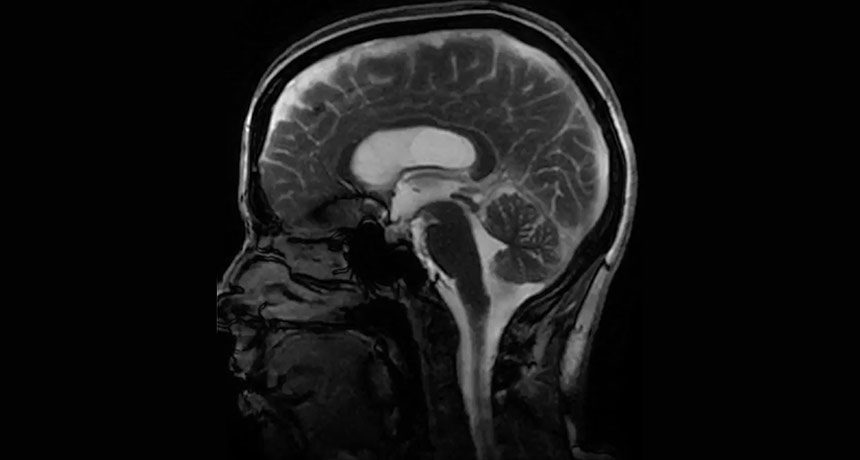
A new twist on magnetic resonance imaging illuminates these pulsing brain ripples, movements so subtle that they had escaped detection by current imaging technology. Abnormal brain motion could signal trouble, such as aneurysms or damage from a concussion.
In the new work, scientists honed an existing method called amplified MRI, a technique that stitches together multiple images taken at precise times of the heartbeat. Using an algorithm that exaggerates tiny movements, researchers at Stanford University, Stevens Institute of Technology in Hoboken, N.J., and the University of Auckland in New Zealand created a movie of the brain's rhythmic writhing as blood and cerebrospinal fluid pump in and drain out.
The researchers used the technique to watch how a normal brain moves. But the method also revealed altered movements of a brain belonging to a person with Chiari malformation type I, a disorder marked by abnormal skull shape, the team reports May 30 in Magnetic Resonance in Medicine.
A way to see how the brain moves may ultimately help scientists spot disorders that distort normal brain motion, such as hydrocephalus, the buildup of too much cerebrospinal fluid in the brain. And by showing which parts of the brain wiggle the most, the method may even point out ways to make helmets that better protect against concussions.
Source: I. Terem et al. Revealing sub-voxel motions of brain tissue using phase-based amplified MRI (aMRI). Magnetic Resonance in Medicine. Published online May 30, 2018. doi:10.1002/mrm.27236.



Reader Comments
to our Newsletter